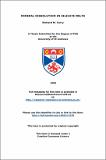Files in this item
Mineral dissolution in silicate melts
Item metadata
| dc.contributor.advisor | Donaldson, C. H. | |
| dc.contributor.author | Curry, Richard M. | |
| dc.coverage.spatial | 324 p. | en_US |
| dc.date.accessioned | 2015-08-18T13:50:55Z | |
| dc.date.available | 2015-08-18T13:50:55Z | |
| dc.date.issued | 1990 | |
| dc.identifier | uk.bl.ethos.253608 | |
| dc.identifier.uri | https://hdl.handle.net/10023/7278 | |
| dc.description.abstract | Quartz and orthopyroxene in mafic rocks are commonly observed to be surrounded by fringes of granular pyroxene, and of olivine and clinopyroxene, respectively. This study reproduces the conditions of formation of these textures, and investigates their origins, kinetics and phase relations. Pieces of silica glass or crystals of orthopyroxene were dissolved into tholeiitic and slightly alkaline basalts, suspended from wire loops in an atmospheric pressure quenching furnace, and run for 10 minutes to 32 days at subliquidus temperatures between 1120° and 1190°C and oxygen fugacities close to the QFM buffer. Polished sections of charges were examined primarily by backscattered electron imagery and by microprobe analysis. The textures developed in silica dissolution experiments consist of fringes of elongate skeletal pyroxenes radially arranged around the silica. The pyroxenes first nucleate on the surface of the silica. As dissolution continues, growth continues mostly on existing crystals, rather than by the nucleation of additional crystals. Dissolution rates for silica range from 2.8*10⁻¹¹ to 4.4*10⁻¹⁰ms⁻¹, and are time-independent until growth of the pyroxene fringe hinders transport processes in the melt. This causes dissolution to slow down, until it ceases altogether after 3 to 8 days. A silica-rich layer of melt forms around the surface of charges run at higher temperatures, suggesting that convection driven by variations in surface tension may operate in the charges. The textures developed in orthopyroxene dissolution experiments consist of granular olivines, some of which nucleate on the pyroxene surface, whereas others nucleate within the pyroxene as a result of the decomposition of included phases. With time, olivine crystals become connected and form complex grain shapes. Dissolution rates for orthopyroxene range from 1.7*10⁻¹¹ to 1.2*10⁻⁹ ms⁻¹. At higher temperatures dissolution rates are constant, but at lower temperatures dissolution is time-dependent. Unlike silica dissolution, orthopyroxene dissolution does not cease as a result of continued neocryst growth hindering melt transport, indicating that the fringe remains permeable. For both systems, the neocryst compositions are strongly dependent on the chemistry of the melt formed at the interface between the dissolving crystal and the bulk melt, and the neocrysts may be metastable with respect to the bulk melt. Chemical equilibration of olivine neocrysts with time is observed for longer experiments. Textural equilibration of olivine grains occurs by the processes of liquid-phase sintering in runs longer than 12 hours. Subliquidus dissolution data are applied to textures from natural samples collected from dykes, lava flows and lava lakes, to estimate the residence time of reacted crystals; values range from 0.6 to 208 days for reacted quartz, and from 0.7 to 462 days for reacted orthopyroxenes. The rates of cooling of the magma and the size of the magma body in which the reaction occurred are also estimated. | en_US |
| dc.language.iso | en | en_US |
| dc.publisher | University of St Andrews | |
| dc.rights | Creative Commons Attribution 4.0 International | |
| dc.rights.uri | http://creativecommons.org/licenses/by/4.0/ | |
| dc.subject | Geology | en_US |
| dc.subject | Mineralogy | en_US |
| dc.subject | Sedimentology | en_US |
| dc.subject | Geochemistry | en_US |
| dc.subject | Earth internal structure | en_US |
| dc.subject.lcc | QE369.62C8 | |
| dc.title | Mineral dissolution in silicate melts | en_US |
| dc.type | Thesis | en_US |
| dc.type.qualificationlevel | Doctoral | en_US |
| dc.type.qualificationname | PhD Doctor of Philosophy | en_US |
| dc.publisher.institution | The University of St Andrews | en_US |
This item appears in the following Collection(s)
Except where otherwise noted within the work, this item's licence for re-use is described as Creative Commons Attribution 4.0 International
Items in the St Andrews Research Repository are protected by copyright, with all rights reserved, unless otherwise indicated.


